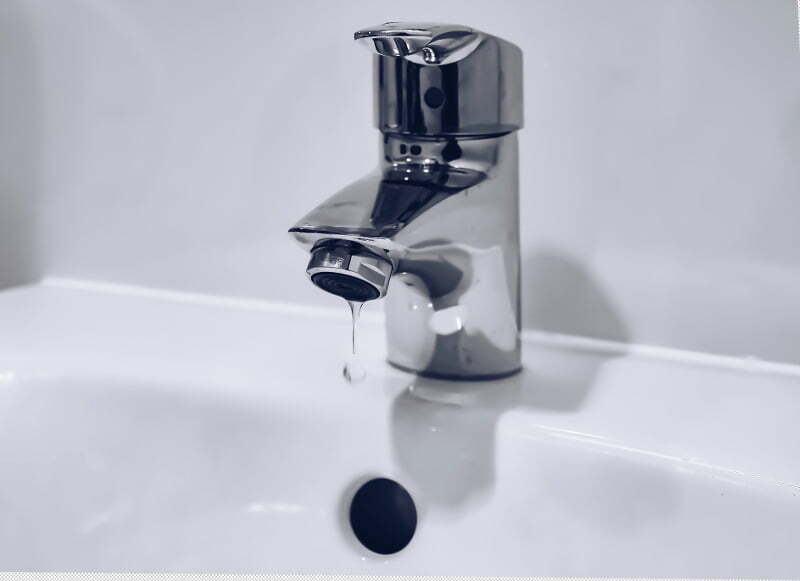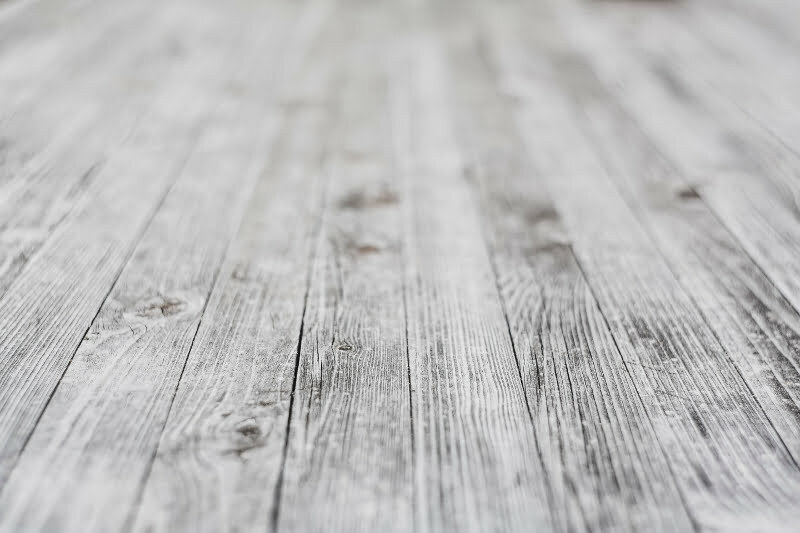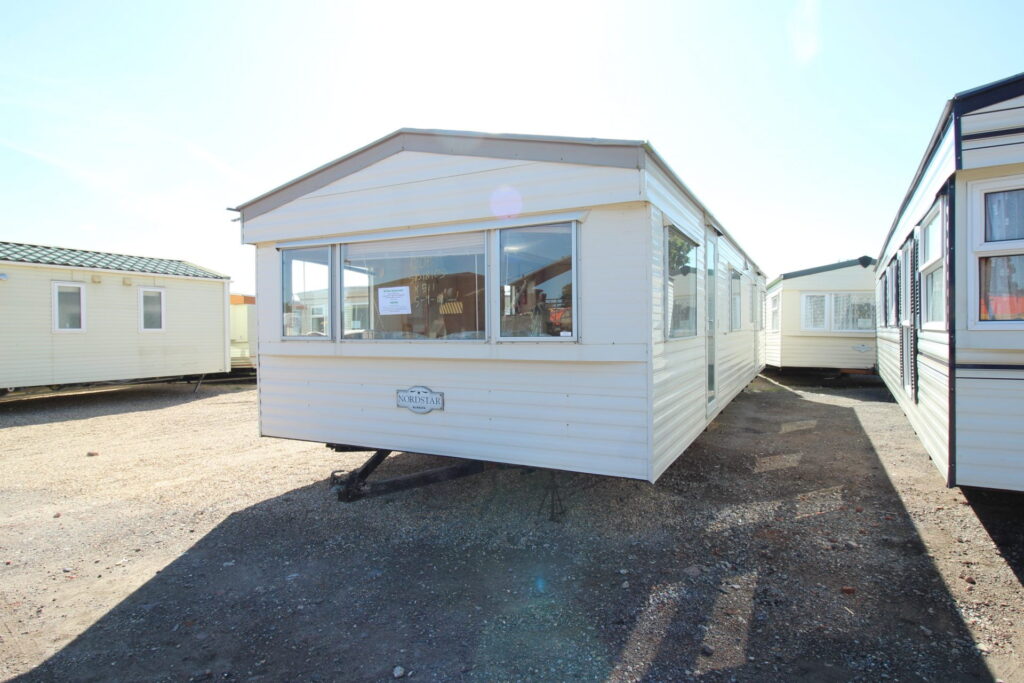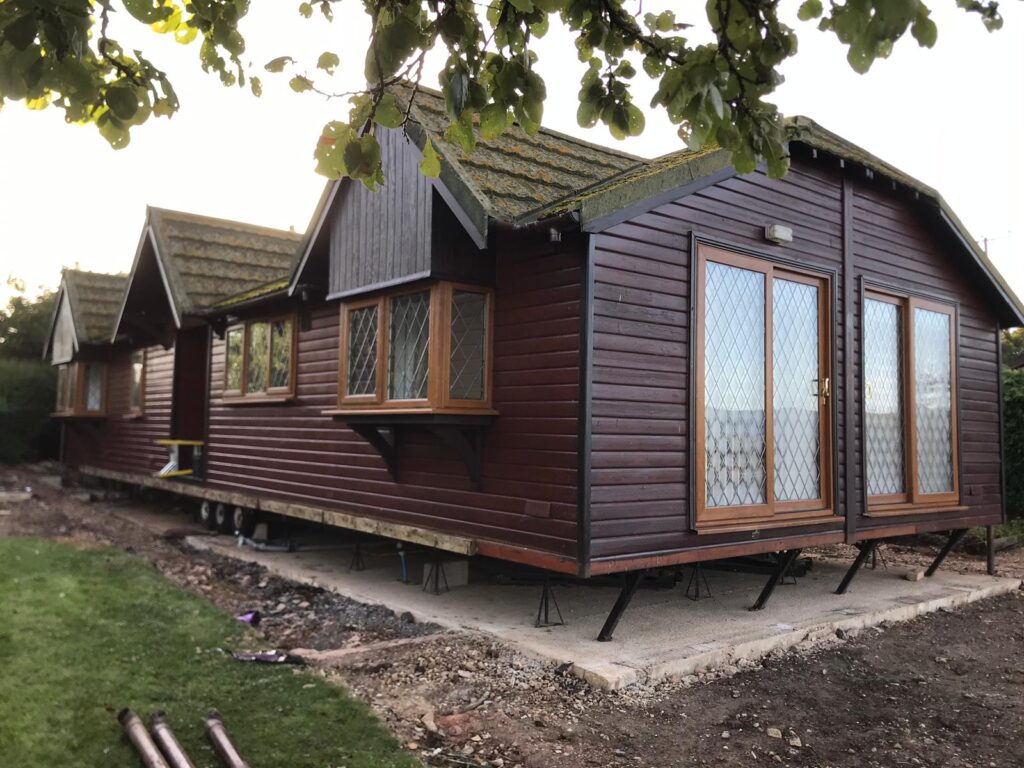Static caravans can last a surprisingly long time if looked after, giving owners incredible value for money on their initial investment.
At N.Doe Caravans, we are often asked to remove caravans for disposal that are 35+ years old, which have been in use right up until their collection.
How can you take care of your caravan to increase its longevity? Our 5 tips will help you keep your new or used static caravan in good working condition throughout the years.
Think it’s time to upgrade to a new static caravan? Browse our range of new and used static caravans online and book an appointment to view our stock in person.
Expected lifespan of static caravans
The expected lifespan of a static caravan can vary quite a bit but generally falls within a range of 15-35 years. The actual lifespan depends on several key factors like frequency of use, location, and regular maintenance.
For a static caravan that’s used frequently as a primary home, its usable life is typically 15-20 years. The constant wear and tear from regular occupancy takes a toll over time. Things like flooring, furniture, and appliances will show age faster with heavy use compared to a weekend getaway. However, vigilant maintenance and repairs can extend the lifespan to the higher end of the range.
If the static caravan is only used occasionally for holidays and weekends, it’s realistic to get 20-35 years out of it. The lighter usage means components like the structure, roof, windows and doors aren’t under constant stress. As long as it’s well-cared for when not in use, an infrequently used van can last for decades. Proper winterisation and storage between trips is crucial for longevity.
Location is another big factor. Coastal areas with high humidity and salt air can corrode the exterior much faster. A static caravan on a site or holiday park near the sea will need diligent maintenance to prevent rot and rust. Proper siting and protective sealants go a long way toward avoiding weather-related wear regardless of location.
With the right consistent care and maintenance, a quality static caravan that’s used seasonally can realistically have a lifespan of 25-35 years or more before needing full replacement. But neglecting repairs and allowing damage to accumulate could cut its usable life down to just 15 years in harsher environments. Regular upkeep along with proper usage and storage are key to maximising how long a holiday home or static caravan lasts.
Make your static caravan last longer
1. Proper water maintenance

Proper water maintenance is crucial to extending the lifespan of your static caravan. Water leaks and moisture build-up can quickly cause major damage if left unchecked. It’s important to promptly deal with any external leaks in the roof as well as internal leaks from pipes.
As caravans are essentially timber structures covered in aluminium and sitting on a steel chassis, water infiltration can deteriorate the wood rapidly. Once inside the walls or floor, moisture enables rot, mould growth, and structural weakness. Don’t ignore any signs of leaks – find and repair the source immediately before the problem compounds.
If you notice leaking pipes, look for wet spots on the floor. Caravan floors are usually a composite board of compressed wood chips and glue. While durable, these boards will delaminate and disintegrate if left soaked. Thoroughly dry any wet boards right away to prevent permanent damage. Use towels or fans to remove as much moisture as possible.
Regularly inspecting seals, joints, and roof panels can catch issues early. Make sure any external leaks are sealed fully on the outer shell. For internal pipe leaks, replace worn washers, fittings and sections of pipe as needed. Take action at the first sign of water issues to maintain your caravan’s structural integrity and prevent invasive repairs down the road. Proper maintenance will extend the life of your caravan.
2. Look after your flooring

Looking after your caravan’s flooring is key to extending its lifespan. Even dry, high-traffic areas like doorways and corridors can show everyday wear and tear over time – think scratches, stains, and bounciness underfoot. If you notice the floor feeling uneven or worn in spots, it likely needs some attention to remain structurally sound.
With regular use, composite wood floors can become loose or flex more than they should. This indicates the boards are separating or losing integrity. Don’t ignore these subtle signs of damage. Adding extra support beneath the problem spots can often remedy bounce or sagging. For more extensive wear, boards may need reattaching or partial replacement.
Be diligent about sweeping and mopping floors to prevent dirt and grime from abrading the surface. For stains, use a cleaner made for composite wood so you don’t jeopardise the sealant. Place doormats inside and out to catch shoes and prevent tracking in debris. Be especially careful about water – thoroughly wipe up spills and drips so moisture doesn’t seep between boards.
With preventative care and attention to emerging wear issues, you can keep your caravan’s flooring looking great and maintain structural integrity. Take action at the first sign of problems through added support, spot repairs, or deep cleaning. Your regular efforts will be rewarded with flooring that lasts for years to come.
3. Look after your roof

Caring for your caravan’s roof is crucial to maintaining its structural integrity. While the main roof panels are typically durable, skylights are vulnerable and require vigilant maintenance. Over time, the plastic skylights become brittle from sun exposure and are prone to cracking. They can also lose their weather-tight sealant, allowing water intrusion.
Caravan owners should check skylights regularly for any signs of leaks like moisture, swelling, or stained ceilings around the perimeter. The ceilings are often made of composite boards which will warp and delaminate when wet over time. Rippling or distorted ceilings are a tell-tale indicator of long-term unresolved water damage.
Resealing compromised skylights right away can prevent further issues. Replace any cracked panes and refresh sealant around the edges to protect from leaks. Damaged skylights are relatively easy to replace with new units to permanently solve the problem. Keeping debris cleared will also prevent the skylights from getting chipped or scratched.
With attentive care, the roof panels themselves can last for years. Staying on top of skylight maintenance is critical to avoid moisture infiltration and deterioration of the ceiling boards. At the first sign of leaks, take action by resealing or replacing the skylights. Your diligence will help the roof remain weathertight and extend your caravan’s usable life.
4. Fit a skirt to your chassis

Adding a chassis skirt is an easy way to extend the lifespan of your static caravan, especially in coastal areas. While the metal chassis itself is durable, it’s vulnerable to corrosion from salt air when exposed. Near the sea, unchecked rust can deduct years from your caravan’s usability.
Unless you have a galvanised chassis, take steps to protect the base. Simply fitting a skirt around the perimeter blocks much of the salty moisture from reaching the metal components underneath. This helps minimise corrosion and oxidation, even in beachfront holiday parks and sites.
Make sure to use a breathable, water-resistant fabric for the skirt. Measure carefully and secure it snugly around the edges of the chassis using straps or other adjustable fasteners. Leave a bit of airflow space rather than wrapping directly against the metal. Check periodically for rips or gaps where moisture could penetrate.
Taking this small preventative measure will pay off for years by keeping corrosive salt spray at bay. Your chassis will stay structurally intact much longer before repairs become necessary, reducing overall maintenance costs. Investing in a quality chassis skirt is a simple way to defend against coastal elements and extend your caravan’s life at relatively little cost or effort. Keep your chassis covered and you’ll add seasons of worry-free camping.
5. Keep your gutters clean
Don’t overlook the importance of keeping your caravan’s gutters clear. Clogged gutters can’t effectively divert water, allowing moisture build-up that damages roofing over time. With simple periodic maintenance, you can avoid extensive repairs.
Make it a habit to check and clean out your gutters at least twice a year. Spring and autumn are ideal times to remove any accumulated debris before wet seasons hit. Carefully use a small trowel or gutter cleaning tool to scoop out leaves, dirt and other clutter impeding drainage.
Also, inspect the gutters themselves for any cracks or sagging areas where water could pool instead of flowing freely. Make any necessary patches or structural improvements while doing routine cleaning. It’s much easier to work on the gutters with them empty and accessible.
Don’t allow overflowing gutters to saturate your roof with stagnant water. The trapped moisture will accelerate the deterioration of seals and structural integrity. Get on a ladder a couple of times a year to keep the channels debris-free. Taking a few minutes to maintain your gutters properly will prevent extensive water damage down the road.
Book a viewing
Don’t wait to start enjoying static caravan living – visit our wide selection of high-quality models available at our Horsham showground today! We have the perfect new or pre-owned static for your needs.
Schedule an appointment to view our inventory in person before you buy. Our knowledgeable team can answer all your questions and help you find the right caravan for your family. Contact us now to start your journey! Call 01403 274877 (opt 1) or submit the form on our website to connect with your dedicated sales agent.
< Back to Blog